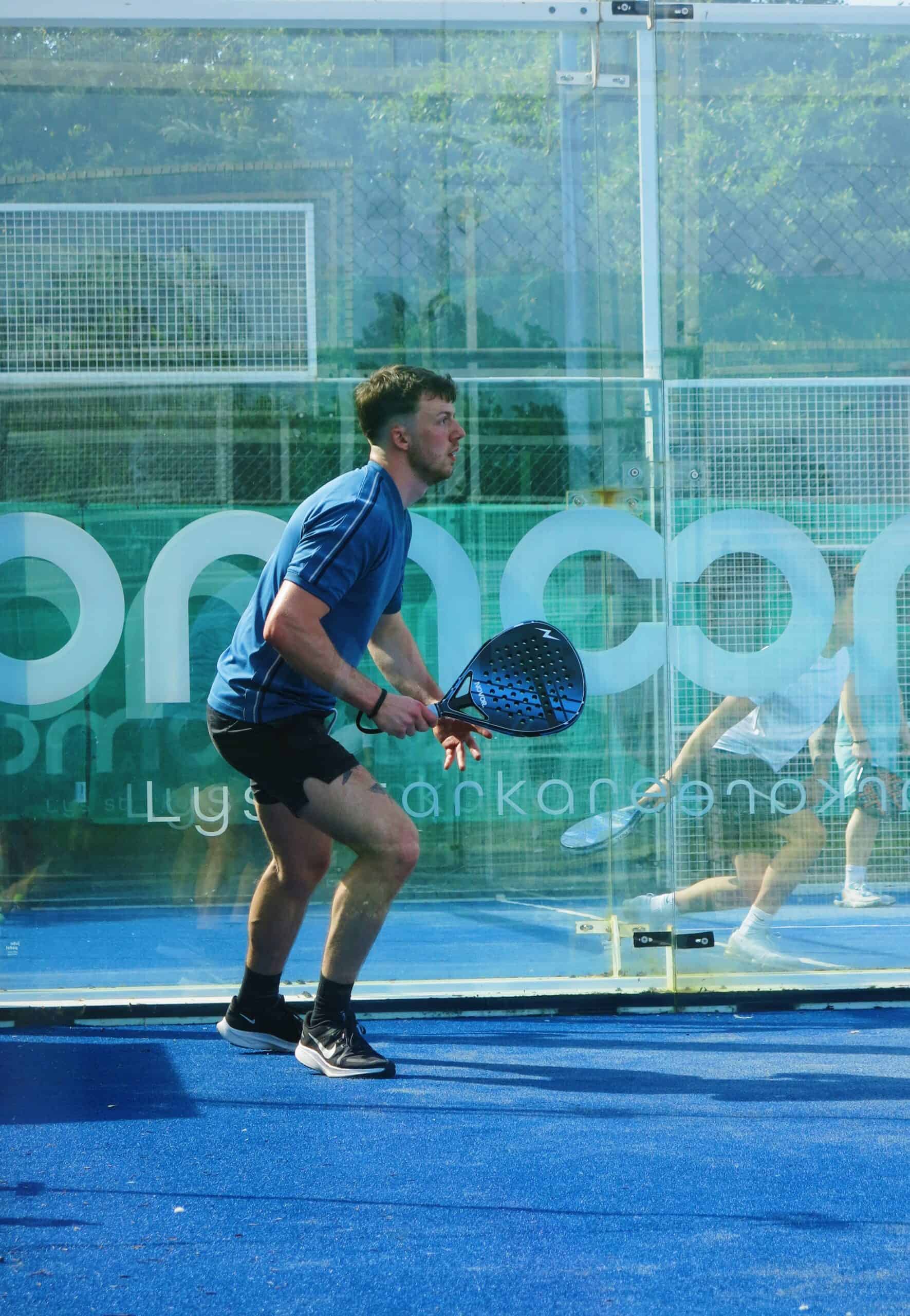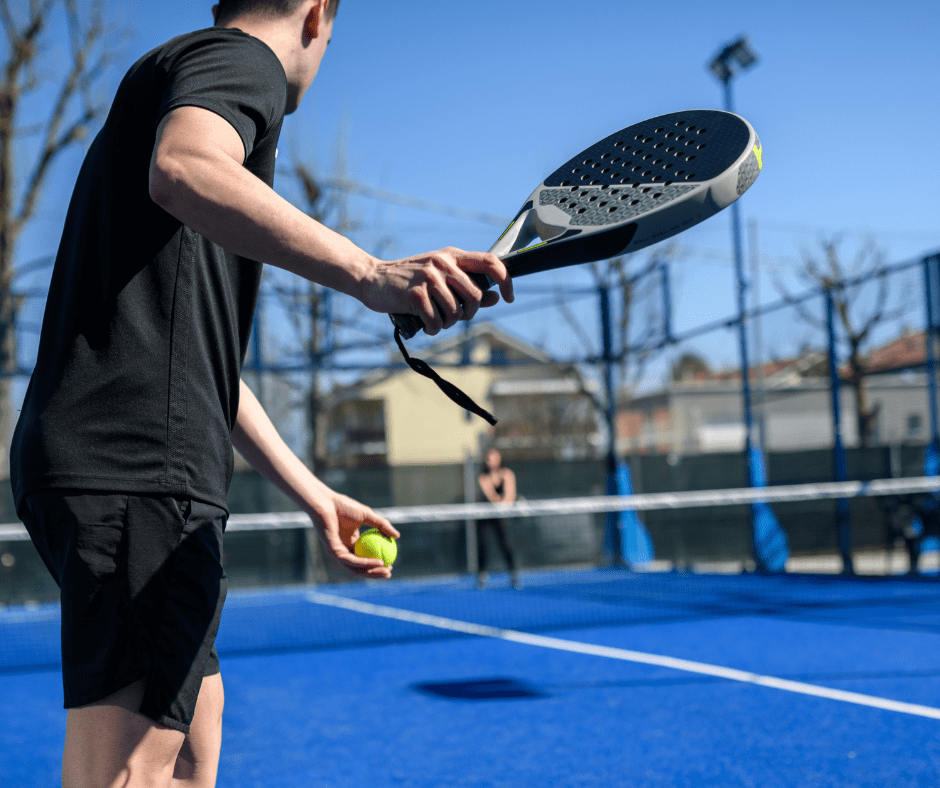
While mastering the basics is crucial in padel, enhancing your padel serve can give you a significant advantage on the court. In this guide, we’ll go into the details of the padel serve, focusing on the technique and strategic ball placement required to elevate your game.
Begin by ensuring you have the correct grip. A continental grip, similar to that in tennis, works well for most players. As for your stance, adopt a comfortable yet dynamic position with your feet shoulder-width apart. This will provide a solid foundation for an effective padel serve and get you set for any type of serve you wish to play.
Hold your ball in front of you parallel with your left leg (or right if you are left handed), while your dominant hand should be positioned on the handle of the padel racket. As you initiate the serve, bring the racket back, preparing for a fluid and controlled motion and ensure you follow through.
A precise toss is critical for a successful padel serve. Aim for a consistent toss height, ensuring the ball is in line with your hitting shoulder. Practise the bouncing off the ball to a consistent height that feels the most comfortable to you and as you make contact with the ball, focus on a smooth, upward swing, imparting topspin to control the trajectory.
The follow-through is often underestimated but plays a vital role in the effectiveness of your padel serve. After striking the ball, extend your arm towards the net, finishing with your racket pointing in the direction of your target. A slight change in the angle of your wrist in the follow through can result in your serve having increase spin or power which can throw opponents off their game.

To keep your opponents on their toes, vary your serve placement. Aim for the corners of the service box, targeting the sidewalls to create challenging angles and positions for them to get into. Mixing up your serves will make it difficult for your opponents to anticipate your shots and can give you an attacking edge by them hitting a poor serve return.
Utilise deep serves to push your opponents towards the back of the court, giving you control of the point. Aim for the back corners, making it challenging for your opponents to return the ball with accuracy allowing you to rush toward the net to be a much more attacking threat putting pressure on your opposition.
Exploit the width of the court with wide serves. This not only puts pressure on your opponent’s lateral movement but also creates opportunities for angled shots in subsequent rallies.
The body serve is a clever tactic, targeting your opponent’s body to limit their swing and mobility. Aim for the hip or chest area to induce discomfort and increase the likelihood of an error. This can also be improved by adding more power in to you shot which will further limit their time to get into position for an effective return.
Elevating your padel serve requires a combination of technique and strategic thinking. By mastering the fundamental elements of the serve from grip and stance, to toss and contact of the call as well as incorporating strategic ball placement, you can gain a significant advantage on the court. Consistent practice and a thoughtful approach to your serves can give you the edge to old your serve. Reading your opponents weak spots is also a key feature in your padel serve as targeting those weak spots can provide you with a competitive advantage, putting you in better positions to to win your game.
Managing Director
We’re dedicated to upholding the highest standards of customer service and delivering on providing premium padel rackets. Please explore our extensive list of reviews to see what our customers have to say!
Super, top quality gear and a super helpful team. Have definitely secured my future business. 🤩
I had the chance to try the Novor padel racket last weekend and I was very surprised with the quality, weight and it’s balance distribution. Very good relation price quality and highly recommended. Very good effort and work developing their first official product by the guys of Novor!
What a stunning racket. Very good price, especially for a carbon racket, delivered in 2 days, comes with a nice bag. Beautifully designed and made, looks the business and feels very nicely weighted. Can't fault it. I just need to get better at the game to justify having such a nice piece of kit!

Elevate your padel game with Novor – Precision | Power | Performance. Unleash your potential with our padel rackets designed in London.
VirtualRock Ltd trading as Novor (™) 2023 . All Rights Reserved